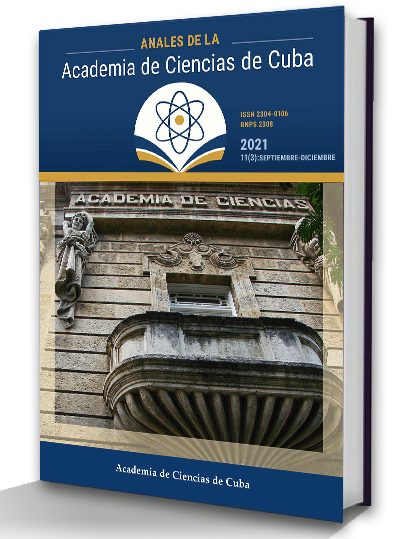Contributions to the knowledge of microscopic morphology of the gonads of Cuban amphibians and reptiles
Keywords:
histology, ultrastructure, oogenesis, spermatogenesisAbstract
Introduction: The ecological importance of amphibians and reptiles, vital in the functioning of ecosystems and with diverse reproduction patterns, is recognized. There are not many studies in the biology of reproduction in Cuban species. The objective is to show the impact of histological and ultrastructural studies of the gonads of Cuban amphibians and reptiles in determining the reproductive status of the specimen and the stages of gametogenesis. Methods: Eleven frogs of the genus Eleutherodactylus, one hylid and eight toads of the genus Peltophryne were collected, in addition to three species of lizards; two lizards, a geckonid and five snakes. The gonads of both sexes were processed with classical histology, immunofluorescence, transmission electron microscopy, and atomic force microscopy. Results: In amphibians and reptiles, oocytes are classified as previtellogenic, vitellogenic and postvitellogenic, according to the process of synthesis and deposition of yolk. There is a greater number of vitellogenic oocytes in the reproductive stage. The testes contain seminiferous lobes in amphibians where cystic spermatogenesis takes place and tubules in reptiles, with radial spermatogenesis. Bidder's organ was identified in male and female toads. The morphology of sperm in amphibians is similar, even at the ultrastructural level, and different between lizards and snakes. Conclusions: classical histology establishes differences at the cellular level in ovaries and testes, an essential aspect to describe the gonadal cycles that occur in amphibians and reptiles. The histological and ultrastructural characters allowed to describe the cell types of gametogenesis.Downloads
Downloads
Published
How to Cite
Issue
Section
License
The journal Anales de la Academia de Ciencias de Cuba protects copyright, and operates with a Creative Commons License 4.0 (Creative Commons Attribution-NonCommercial License 4.0). By publishing in it, authors allow themselves to copy, reproduce, distribute, publicly communicate their work and generate derivative works, as long as the original author is cited and acknowledged. They do not allow, however, the use of the original work for commercial or lucrative purposes.
The authors authorize the publication of their writings, retaining the authorship rights, and assigning and transferring to the magazine all the rights protected by the intellectual property laws that govern in Cuba, which imply editing to disseminate the work.
Authors may establish additional agreements for the non-exclusive distribution of the version of the work published in the journal (for example, placing it in an institutional repository or publishing it in a book), with recognition of having been first published in this journal.
To learn more, see https://creativecommons.org






